Editor’s Note: This story can also be found in the upcoming Fall 2020 issue of Life & Thyme Post, our quarterly newspaper exclusively for members. Get your copy.
When Hawaii locked down at the end of March as a result of COVID-19, one of the biggest concerns for residents was having enough to eat. The state of Hawaii’s population of 1.4 million relies on imports for more than ninety percent of its food and only has enough on shelves at any one time to last between three and ten days. But today, many are looking toward ancient land practices to guide the transition to a more sustainable future.
The Hawaiian word for land is ʻāina. But unlike land, which is associated with ideas of ownership and use, ʻāina can be translated to “that which feeds.” Hawaii is the most isolated island chain on the planet, and ancient Hawaiians understood the survival of their society, and that the ability of future generations to live and thrive, rested on their land stewardship.
This idea that the ground was a life-giving force led to the creation of a complex system of resource management around which the islands’ society was built. This system was equal parts resource division, political organization, and philosophy. Land divisions that stretched from rainforest-covered mountaintops through fertile midlands and down to abundant seas were cultivated, a highly specialized division of labor allowed workers to produce food and goods in surplus, and the reaped bounty was distributed equally amongst each division’s inhabitants. By some early Western reports, this system was so efficient that Hawaiian farmers only had to work for a handful of hours each day. In this way, half a million people were fed.
But things took a sharp turn in 1778 when Captain James Cook accidentally sailed into Hawaiian waters and exposed Hawaii to the rest of the world. The native population had no immunity to Old World diseases, and within two generations, the Hawaiian population steeply declined—some researchers estimate by up to as much as eighty-five percent. At the same time, American and European missionaries and businessmen flocked to the islands, bringing with them a thirst for land and power; and in 1848, under Western influence, a system of land division allowing for the buying and selling of land was adopted by the Hawaiian Kingdom. The Native Hawaiians, who were previously accustomed to working the land communally and freely sharing resources, did not believe in land ownership and lost out, ultimately obtaining less than one percent of Hawaii’s land.
Today, much of Hawaii’s population is far removed from the deep, intrinsic connection to the land that once guided Hawaiian society. However, a growing movement aims to reestablish this relationship. Aloha ʻāina (love of land) is the modern name given to the ancient understanding that people must care for the land in order for it to care for us. Aloha ʻāina emerged in the popular consciousness during the 1970s when a wave of cultural pride embodied in song, dance, protest and language swept over the islands. In recent years, the aloha ʻāina movement has centered largely on ideas surrounding sovereignty, conservation and community.
One of the organizations that best embodies the modern spirit of aloha ʻāina is MAʻO Organic Farms. Located in Waiʻanae, the area with the highest concentration of Native Hawaiians, MAʻO does more than just grow vegetables; they also raise young leaders. Since its founding in 2000, MAʻO has employed youth from the under-resourced Waiʻanae community, providing them with mentorship, guidance, and college tuition, while simultaneously reconnecting them with ʻāina.
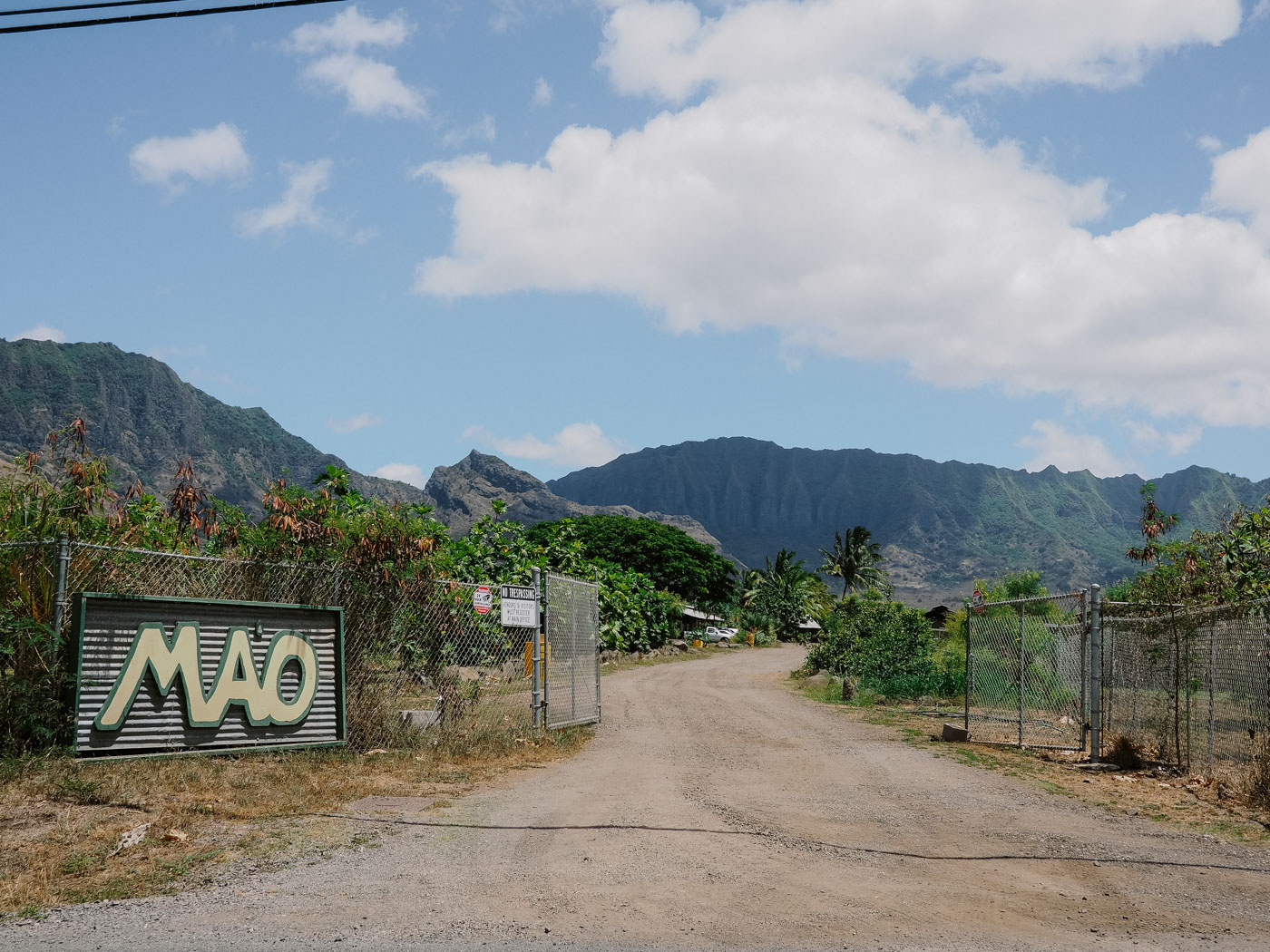
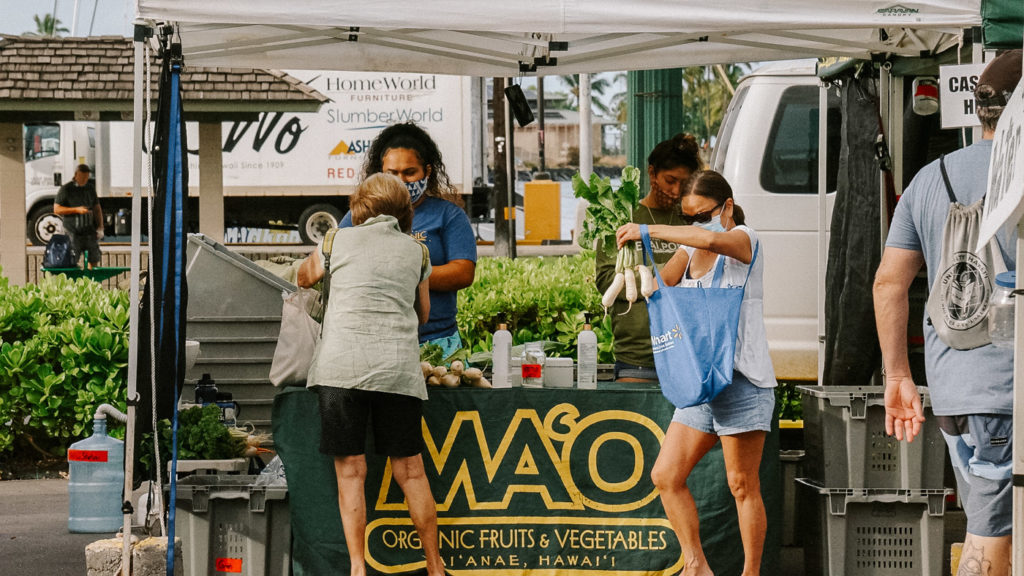
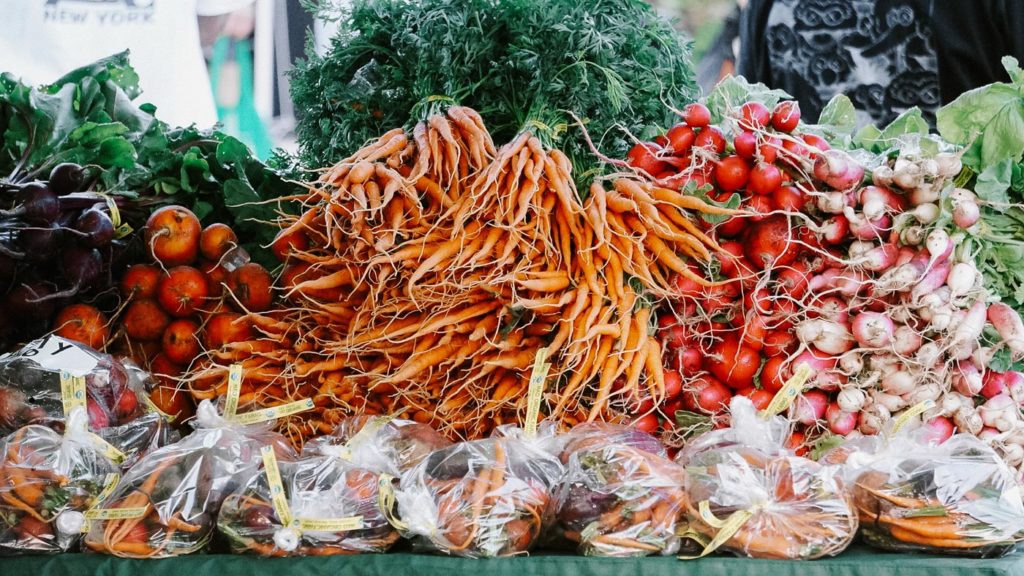
Over the span of the two years it takes to earn an associate’s degree, each cohort of interns alternates days in class at Leeward Community College and on the farm, learning the academics of their chosen fields, as well as how to farm from seed to harvest. However, as farm manager and program alumna Kaui Sana notes, perhaps the most important thing interns take away from the program is the realization that the life-giving legacy of the land reaches far into the past, and it is their responsibility to carry that legacy into the future. “I see in my interactions with the young people,” Sana says. “I’ve heard them say just touching soil made them realize, ‘like, damn, my ancestors grew food.’ It rattles a little flame in them. It opens up a different perspective.”
MAʻO’s impact is multifaceted. Young people who might have otherwise fallen into negative intergenerational patterns are able to earn a degree and come away looking at life from a different point of view. They, in turn, apply their understanding of aloha ʻāina into the community. “[When] they transition out of the farm and go into their career choice or their next part of their journey, we know that we’re setting them up to continue to do good,” says Sana. “We grow food, but we also grow young people, young leaders. We’re just creating good people for the future to help make better decisions for the collective.”
It should not be overlooked that MAʻO has chosen to shape youth through the lens of organic food. The land and people of Oahu’s Waiʻanae coast have been subjected to generations of underfunding and underrepresentation, which has manifested into high rates of poverty, preventable disease, and hunger. Much of the once fertile farmlands have been occupied by the military or purchased by developers. While fast food and corner shops abound, access to fresh, affordable produce is scarce. MAʻO’s expansion from five acres twenty years ago, to 281 acres today, has made it the fourth largest private landowner in Waiʻanae. That growth, and its ability to produce quality, organic vegetables, is an act of reclamation and justice.
MAʻO has been operating for twenty years, and other organizations are beginning to follow their lead, not just in their farm models, but also in the way they affect change from the ground up. Dr. Kamana Beamer, professor at the Center for Hawaiian Studies and the Richardson Law School at the University of Hawaii, is a founding member of ʻĀina Aloha Economic Futures, an initiative born from the COVID-19 pandemic that aims to gather community input to shape Hawaii’s future through the lens of aloha ʻāina. “We recognize that when aloha ʻāina was fully functioning, in our ancestral society, it was really this balance of top-down and bottom-up community empowerment,” Beamer says.
In 2019, Hawaii boasted a record-breaking 10.4 million visitors, and tourism accounted for a quarter of Hawaii’s economy, but that came screeching to a halt when the pandemic hit. While diversifying the economy has been discussed for decades by lawmakers and citizens alike, without a real impetus for change, it was easy enough to continue to operate on the model that was working. But now that COVID has exposed vulnerabilities in the system, the community has taken steps to rebuild for a more resilient future.


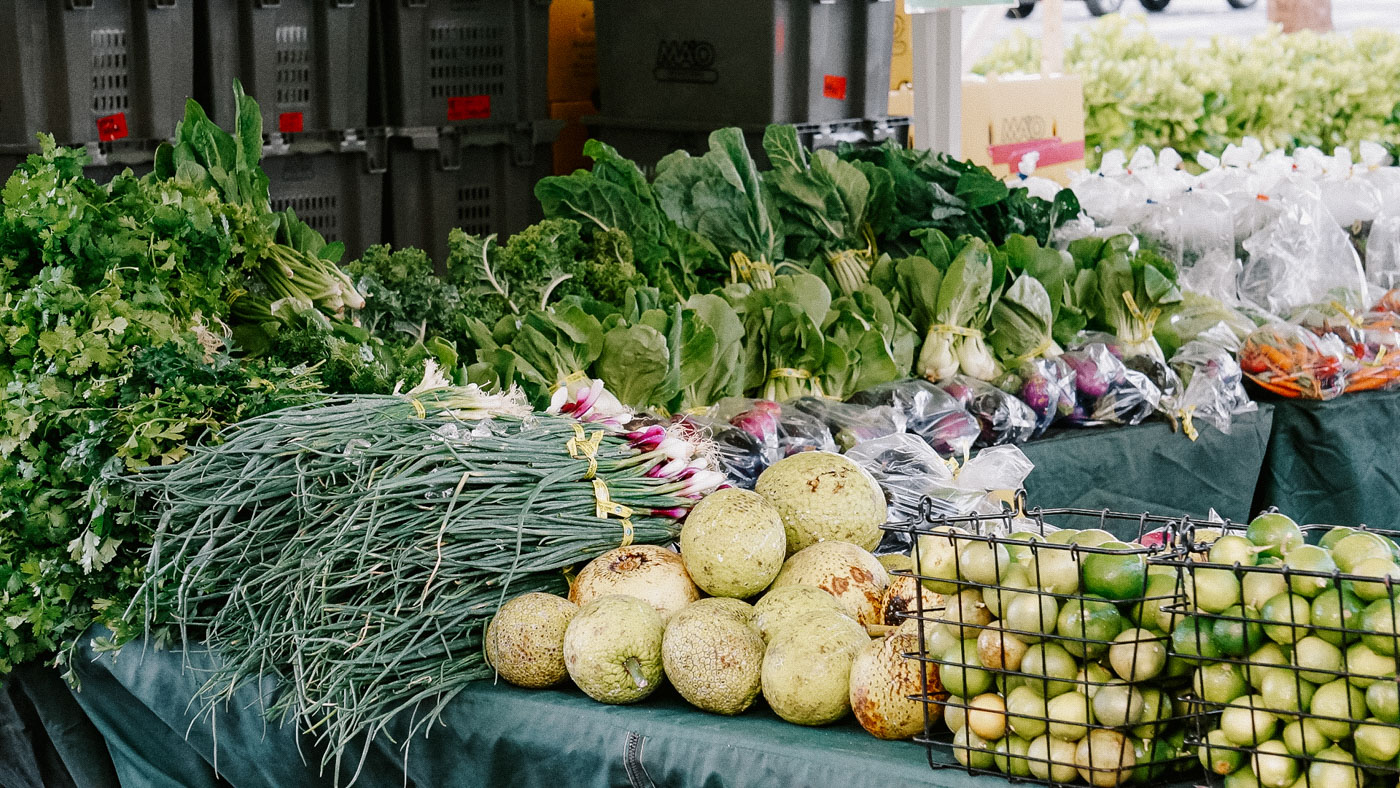
As people began looking toward local producers to support, MA’O was an obvious choice for many. “When all the restaurants shut down, and even some of the grocery stores pulled back in their ordering, we [saw] our CSA sales skyrocket, and we were able to sustain doing three hundred to four hundred CSA boxes [weekly],” says Sana. “We doubled our sales at the farmers market from March, and we’re still going over what we were making before.”
Beamer is optimistic that this community-driven change is what the state needs to emerge from the pandemic stronger, more resilient, and more connected to the land—as well as to each other. “COVID can help us,” he argues, “to rebalance and reconnect and recognize community voice and empowerment” in all areas from food, to education, and to energy. “It’s a strange thing because there are certainly a lot of challenges and hurt and confusion in this period, but there’s also a lot of hope that’s emerging.”
The pandemic has exposed the gaps in Hawaii’s systems. The state’s heavy reliance on imports and tourism was not sustainable, and Hawaii is now faced with a long, uncomfortable rebuilding process. To look forward, many are looking back at the lessons of the past, not only at the positive impacts of beliefs such as aloha ʻāina, but at the limitations of blindly following one model without reassessing its impact throughout the years.





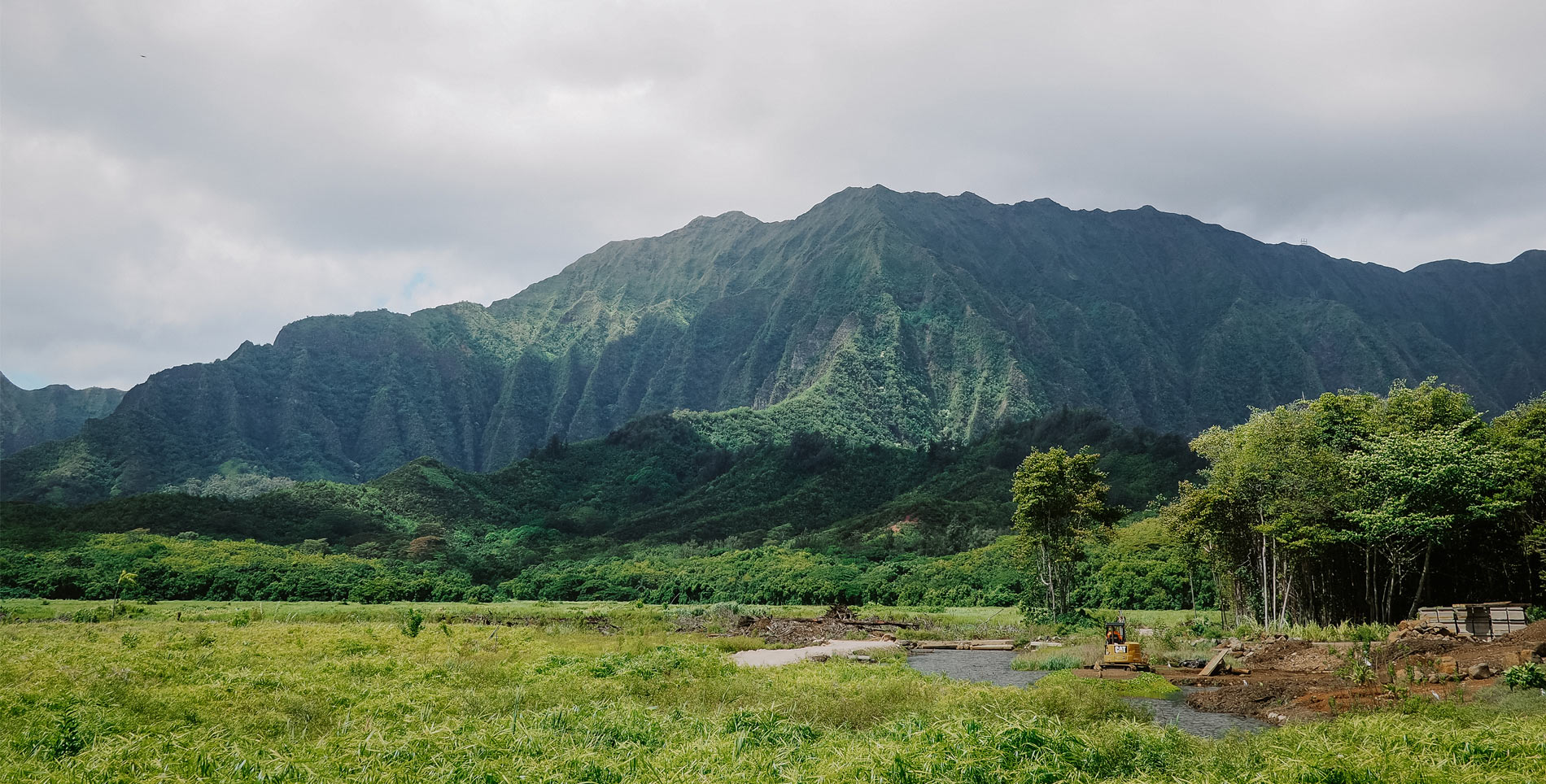

Our comments section is for members only.
Join today to gain exclusive access.